The human species must urgently reduce carbon emissions. With 49% of the UK’s carbon attributable to buildings, our increasingly decarbonised grid and improved fabric have made headway. But we face a further challenge: reducing embodied carbon within the building’s structure.
In this article, director Nicola Carniato discusses what our industry can do to tackle climate change.
Until now, discourse has focused on the flow and utility of material and energy, but has neglected the environmental imbalance caused by material extraction and production. We must urgently de-couple economic growth from aggressive resource consumption. A circular-economy design ideology may be the first step towards this vision: serving, rather than limiting, our future generations.
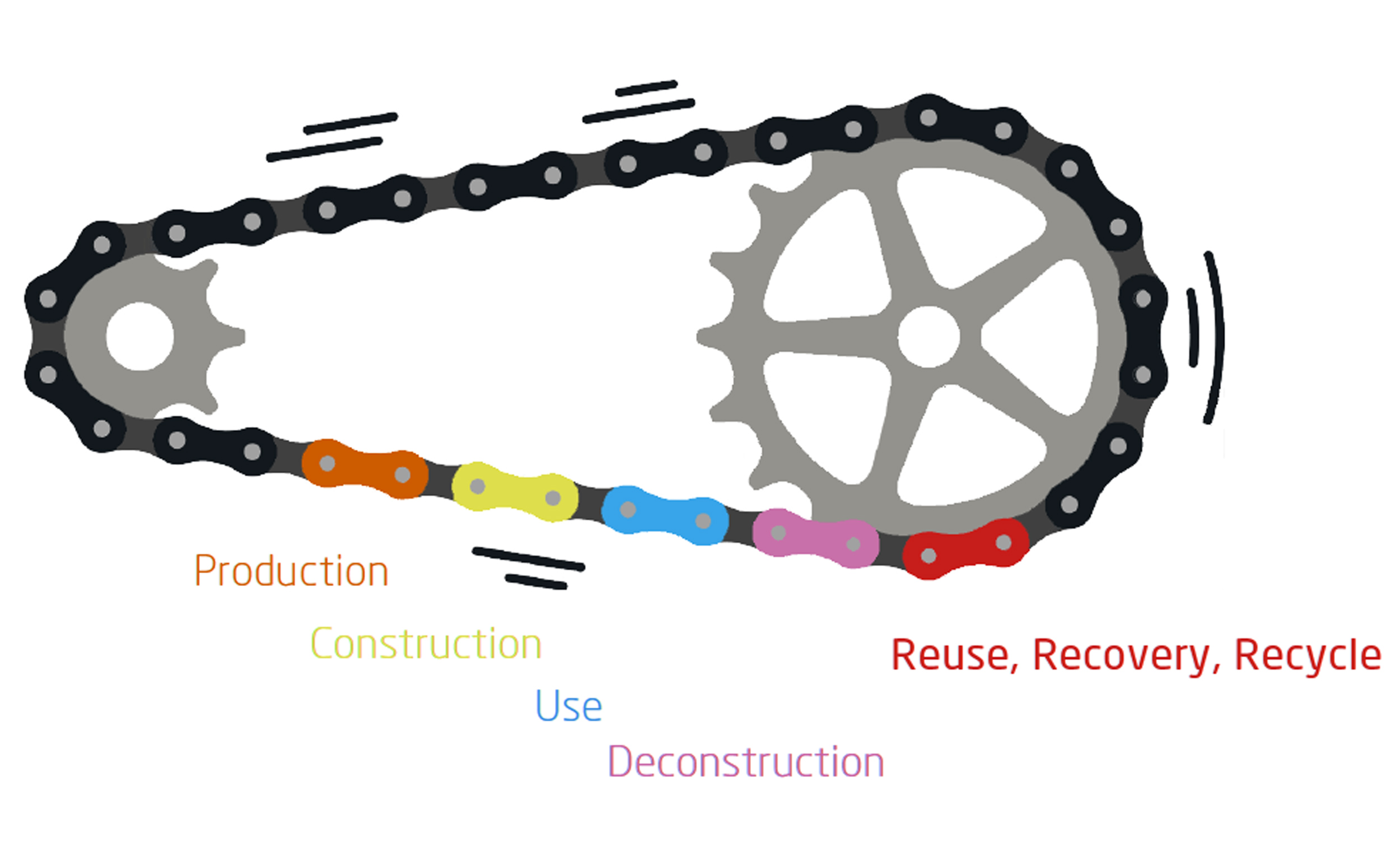
In the circular economy, every link is important.
The race to net zero buildings was kick-started in 2019, when the UK became the first major economy to commit in law to becoming net zero by 2050. The UK’s Committee on Climate Change soon issued the report ‘Net Zero: The UK’s contribution to stop global warming’, as the first step in motivating a countrywide response.
This action precipitated the governmental, academic and professional institutions to start tackling the climate emergency, with all parties involved in buildings design and delivery now rethinking their approach, and recognising the need to design for net zero Carbon in all new buildings by 2030.
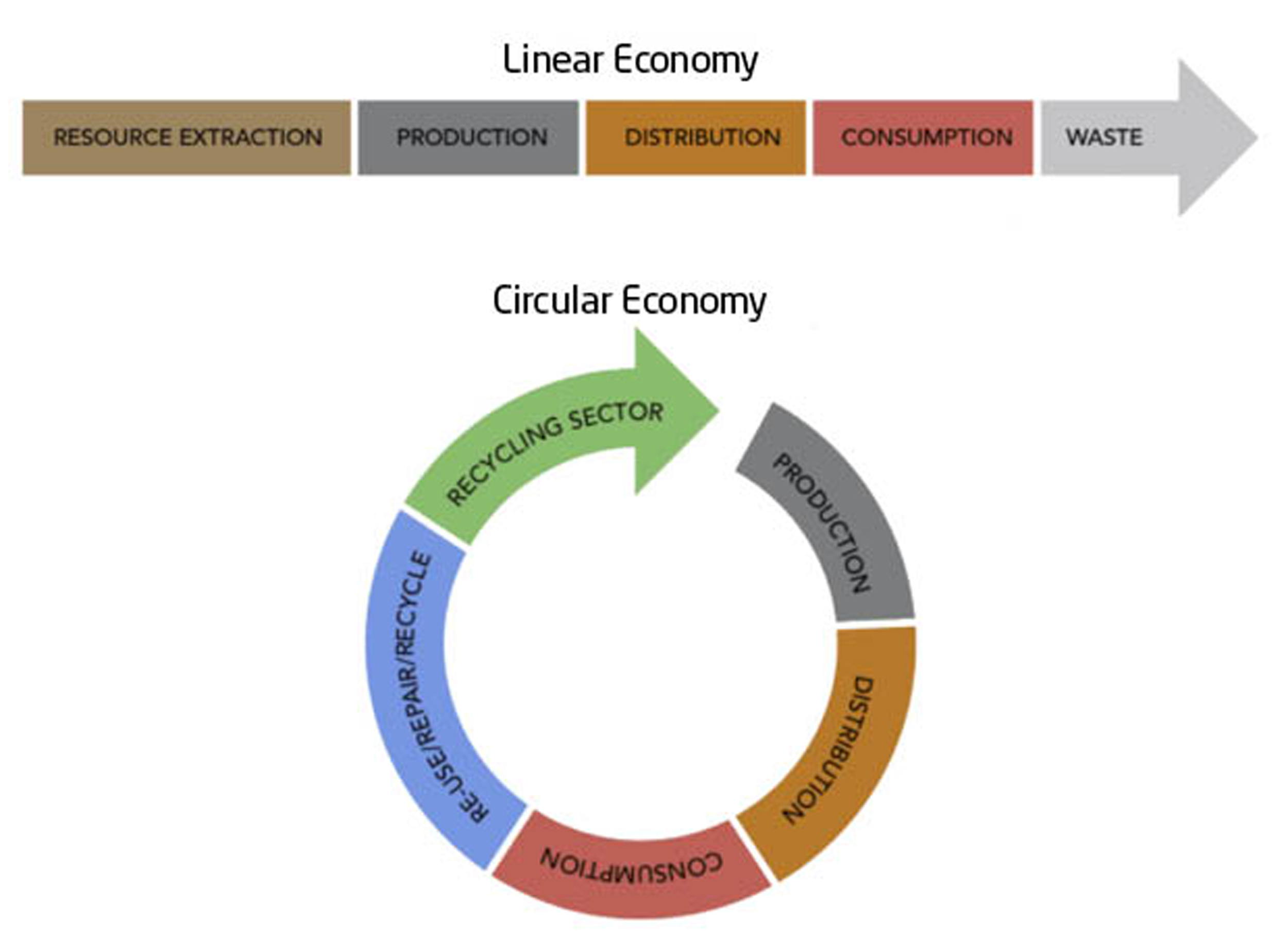
The ‘bad growth’ linear economy, and the ‘good growth’ circular economy.
Life-cycle assessments allow us to quantify a project’s embodied and operational carbon emissions, and are becoming integral to the design service from the preliminary stage onwards. This forms part of achieving net zero in accordance with best-practice targets provided by RIBA 2030 and the London Energy Transformation Initiative (LETI). Project teams, and particularly structural engineers, are taking urgent action to tackle up-front carbon, and are designing with the building’s entire life in mind.
The system boundary to assess carbon emissions – which is defined by EN 15978 ‘sustainability of construction works’ – considers the production and construction stage, known as the ‘cradle to gate’ stage, alongside the in-use and end-of-life stages. This approach follows the traditional, linear ‘take-make-dispose’ or ‘cradle to grave’ consumption patterns, and only considers the ‘beyond building life’ stage – which deals with material reuse, recovery and recycling – as a supplementary opportunity.
This standard framework is a fundamental tool for delivering net zero by 2030, but the beyond-life stage must be equally fundamental and important, as it is this stage which leads the transition to the ‘cradle to cradle’ (C2C) circular-economy approach.
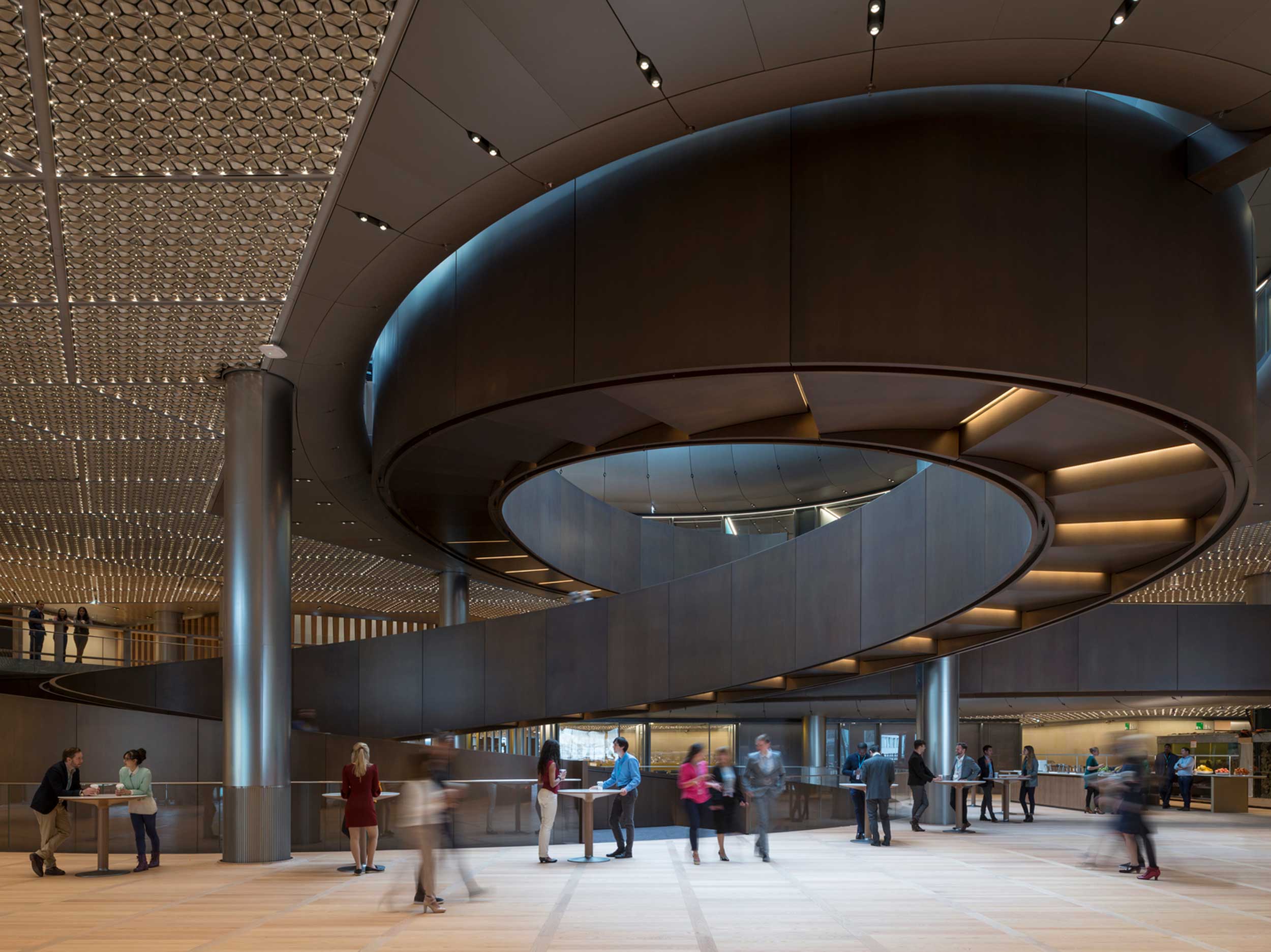
The wide benefits of adopting this C2C approach can no longer be neglected. It provides the opportunity to excise most of the embodied carbon that would otherwise come from the virgin production stage, and also captures significant carbon-reduction opportunities arising from the recovery, reuse and recycling processes. This approach is championed in the Mayor of London’s 2020 publication and industry primer ‘Design for a Circular Economy’.
Under these C2C principles, the building can effectively become a material bank. Just like a monetary bank, assets can be deposited or removed during the building’s use, including through maintenance and renovation. As with financial investments however, any materials can lose much of their value after they’ve been converted into buildings, and this historically has often been the case, due to the difficulty and cost of extracting materials at their original ‘investment’ quality.
For the effective implementation of C2C, buildings must fundamentally be used for as long as possible, with a designed-in adaptability that facilitates easy repurposing. If a building cannot be adapted and re-adapted to differing uses, its long-term value is reduced, and in this modern world one could perhaps conclude that any such design was wrong in the first place. The design therefore needs to be durable and resilient, but also ready for alternative technology, and able to cope with change. Any such change must also happen through wasteless modification.
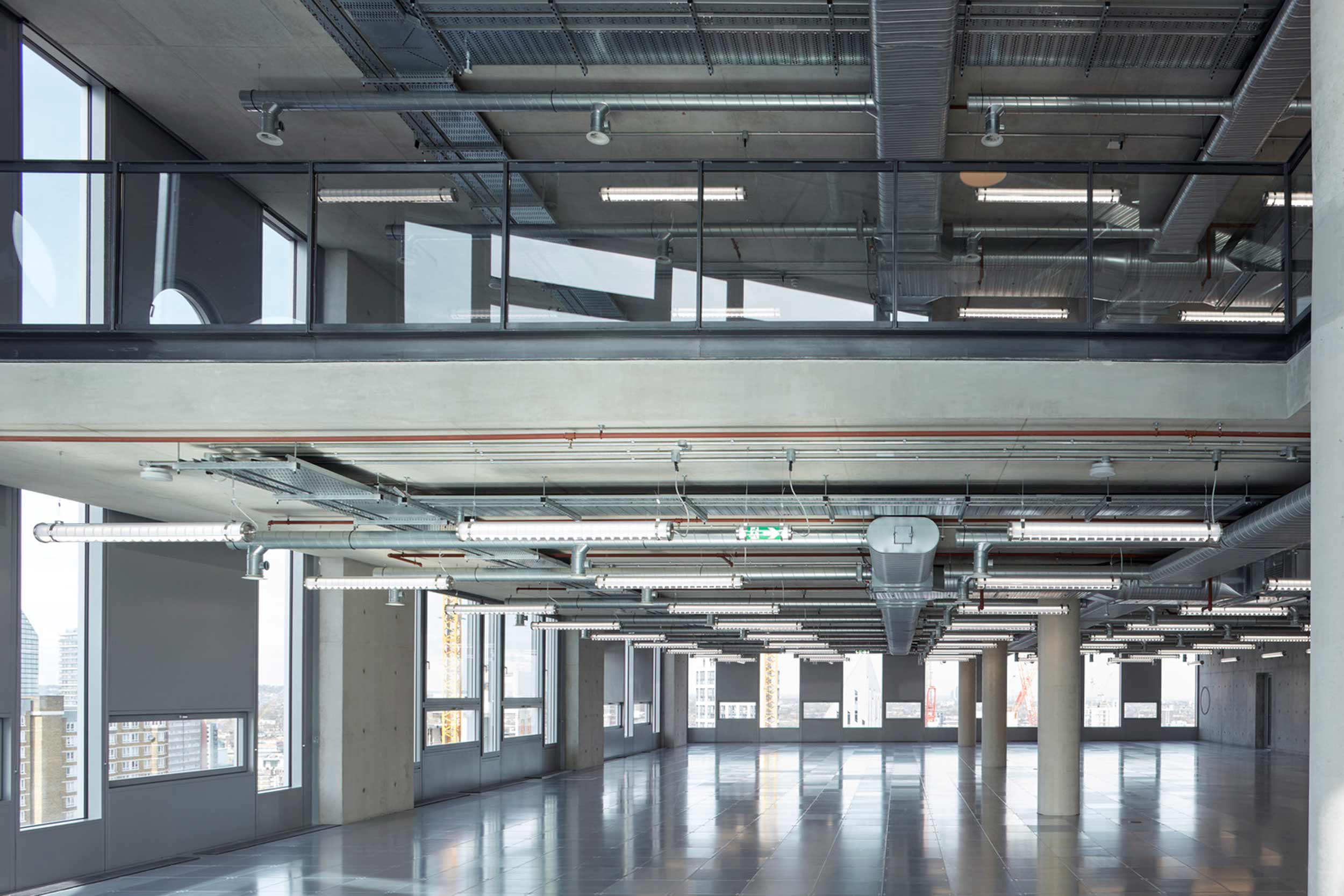
The White Collar Factory’s design is flexible to incorporate a mix of uses, reflecting the lifestyles of the building’s occupants, and reacting to the changing market.
Zero waste and zero carbon are equally important targets. The circular-economy approach can drive both of these goals; creating and maintaining value by using materials for much longer, while embedding opportunities for reuse, repurposing and recycling.
The built environment sector uses more material resources and throws away more waste than any other. The role of designers in waste reduction is therefore crucial. Designing-out waste must simply become part of the overall sustainability-consideration within construction, and this consideration must extend to include factors such as carbon impact, resource depletion, ecological impact, socio-cultural impact, and water use.
Any commitment to zero waste to landfill, and zero waste projects, can only be delivered through ongoing communication between clients, design teams, contractors and sub-contractors. This communication is needed to ensure that designs and specifications directly facilitate or even demand an achievable and economical waste reduction.

Our procurement choices have a huge impact on a project’s sustainability outcomes. By definition, sustainable procurement sits at the centre of the circular economy, and requires a new process that completely rethinks and overturns today’s linear world.
Whole-life thinking calls for longer-term perspective. The design and specification must balance the team’s desire for structural materials that have low environmental impact, with an optimised structural performance, and with consideration of the end-of-life scenario.
To do this effectively as engineers, we need a deep knowledge of the materials that we’re building with, and we must understand the material production from raw state to finished item. We must understand the processes that facilitate reuse or recycling in an energy-efficient way. Only then can we respond appropriately.
The key then, for a circular future, is to make the existence and ownership of resources into a positive, economically viable business. This means applying the principles of design for deconstruction and disassembly, together with a ‘material passport’; digital data on the material or product characteristics, including its performance during the building’s use.
The material passport will be a fundamental tool for imbuing materials with a value of recovery and reuse, and can be implemented readily through building information modelling (BIM).
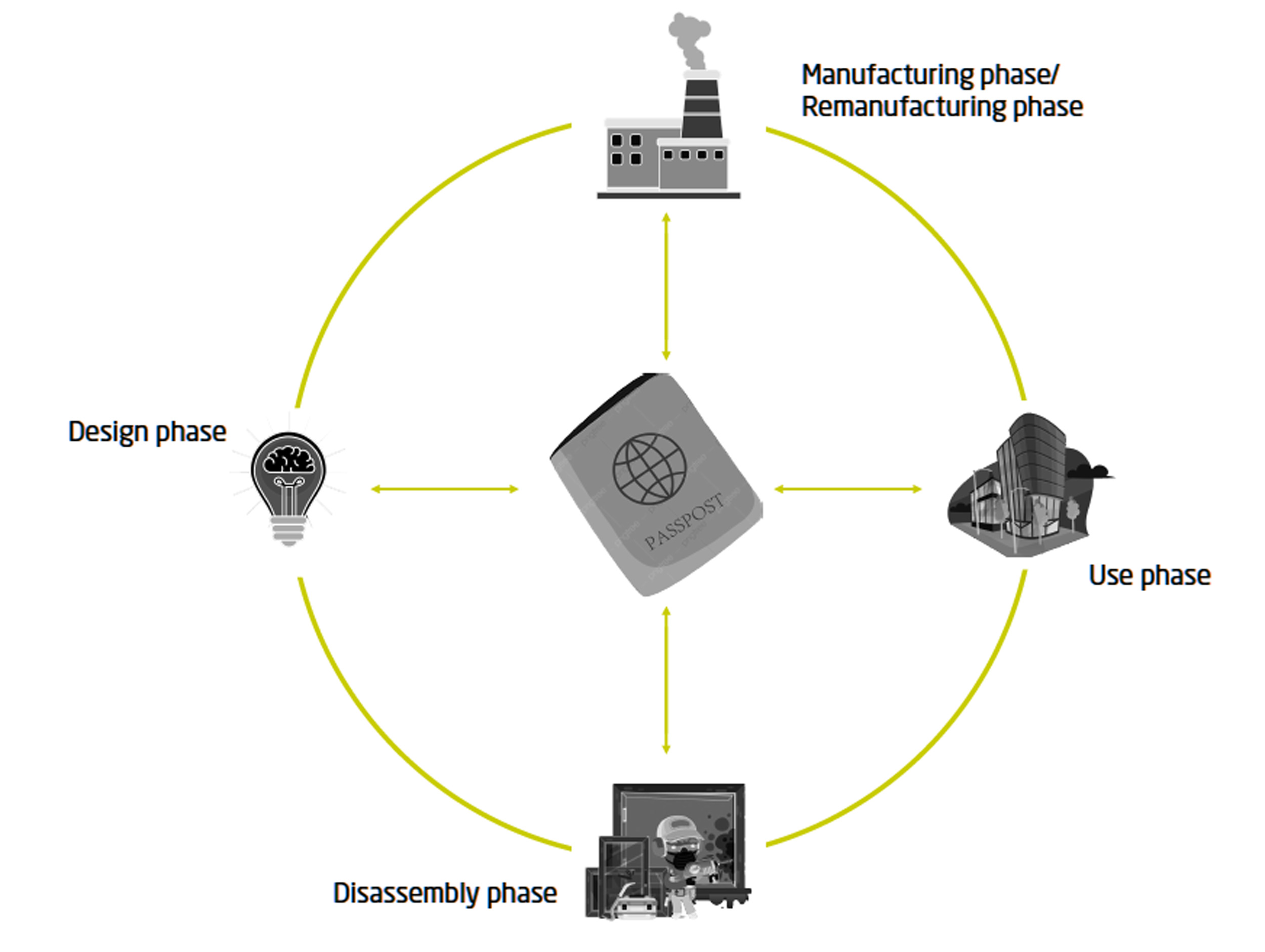
The BIM-based material passport.
Digitalisation can boost this transformation towards a more sustainable, circular economy. Digital solutions such as artificial intelligence (AI), blockchain, and the internet of things (IoT), can redefine production and consumption in the 21st century, powering a new circular economy that works for people and planet alike.
We are entering a fourth industrial revolution, characterised by a fusion of technology that blurs the lines between the physical, digital and biological spheres. This process has been accelerated by the Covid-19 crisis.
We must act immediately, to inspire our next generation to re-think, to re-design, and to build a positive future by imitating the productive processes of nature’s biological metabolism. As in nature, in the circular economy there is no waste, as waste is simply the basis for new production.